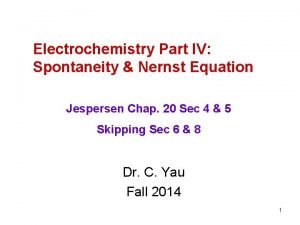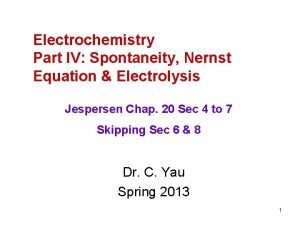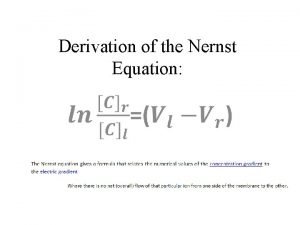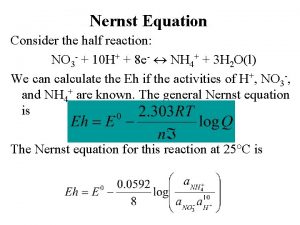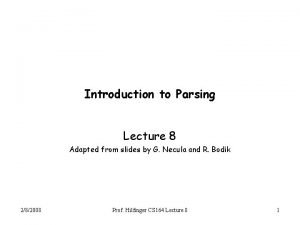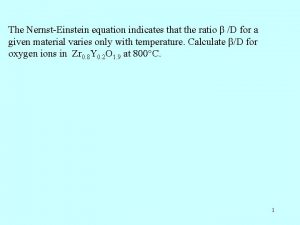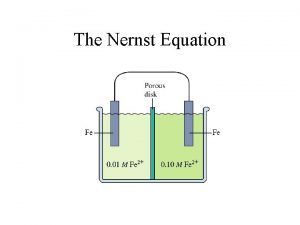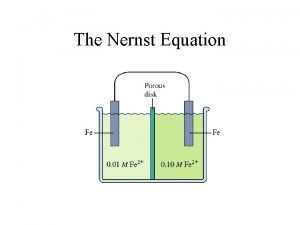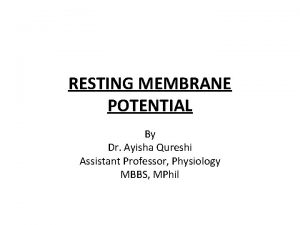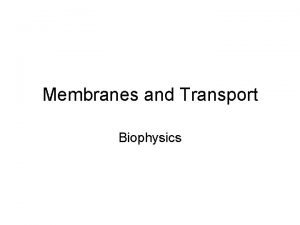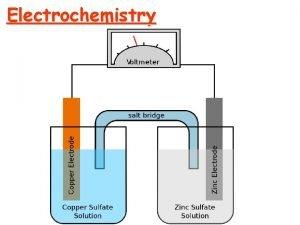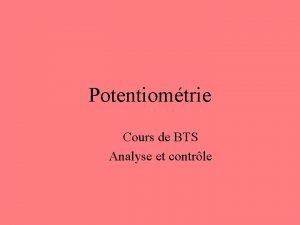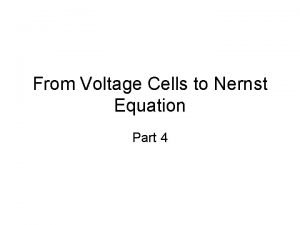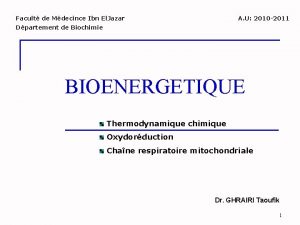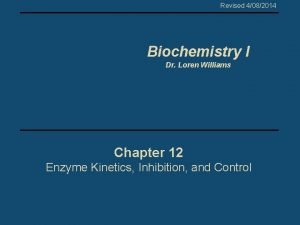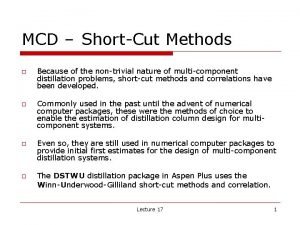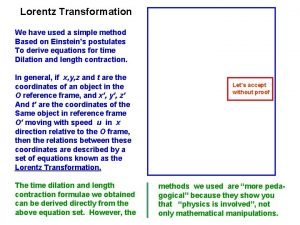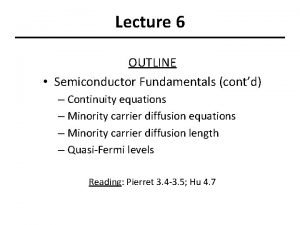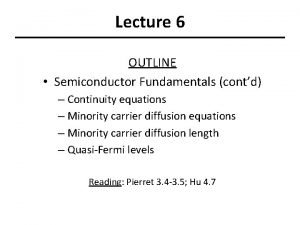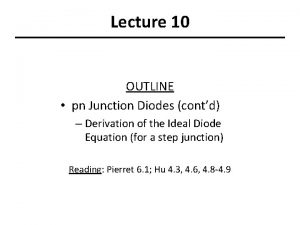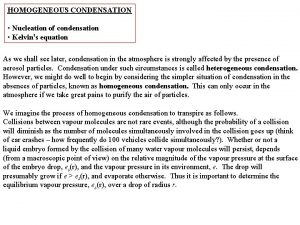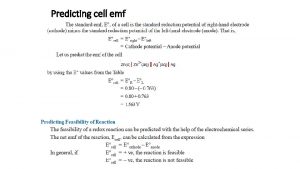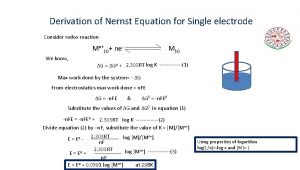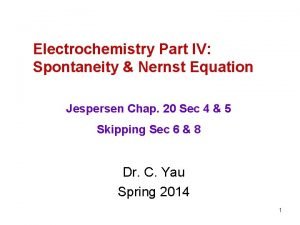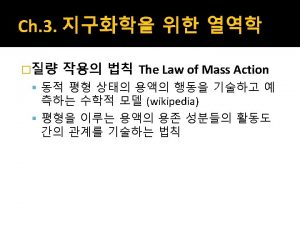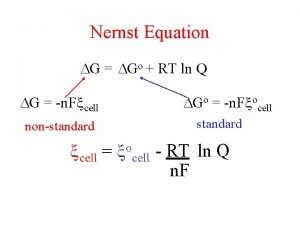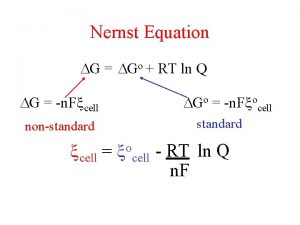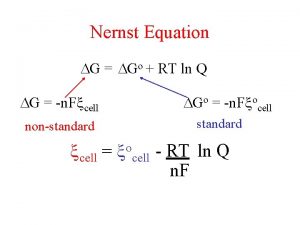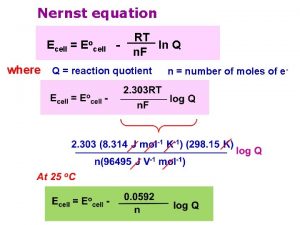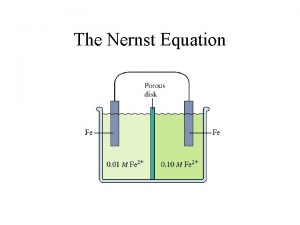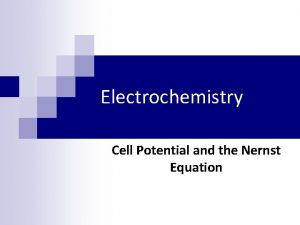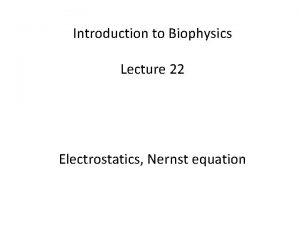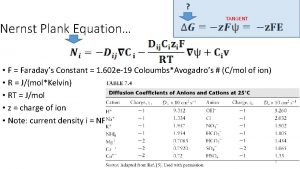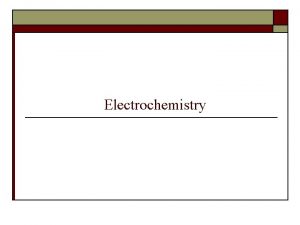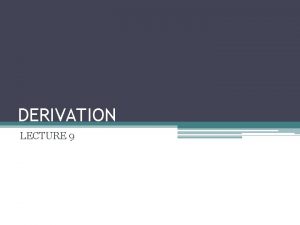Derivation of the Nernst Equation Why else do


























- Slides: 26

Derivation of the Nernst Equation:


Why else do we care?

What else? Other health conditions besides atrial fibrillation may result from problems with membrane potential: 1)Cystic fibrosis—poor chloride movement across the membranes 2)Epilepsy may be due to poorly working voltage gated channels

Intuitive picture for Flux

We start with diffusive flux: Concentration per volume=mol/cm^3* 1/cm

Putting them together:

Combining the Drift and the Diffusion: •

Getting everything in terms of mobility: •

More on the Boltzmann constant from Wikipedia: The Boltzmann constant (k or k. B) is a physical constant relating energy at the individual particle level with temperature. It is the gas constant R divided by the Avogadro constant NA. k=R/ NA (See thermally agitated molecule)


More on the Faraday constant from Wikipedia: (one mole of electrons) In physics and chemistry, the Faraday constant (named after Michael Faraday) is the magnitude of electric charge per mole of electrons. [1] It has the currently accepted value F = 96, 485. 3365(21) C/mol. [2] The constant F has a simple relation to two other physical constants: where: F=e. NA e ≈ 1. 6021766× 10−-19 C; [3] NA ≈ 6. 022141× 1023 mol− 1. [4] NA is the Avogadro constant (the ratio of the number of particles 'N' to the amount of substance 'n' - a unit mole), and e is the elementary charge or the magnitude of the charge of an electron.

One Mole of Particles:


Multiply both sides by F and z: •

Cross out F in the diffusive flux; add the factor z in the drift expression

Current Flux: •

Set equation=0 to get Nernst equation (no current) •


Now we have the variables we want: •

Move the diffusive flux term over to the LHS •

Divide by -RT/Fz: •

Separation of Variables: •

Integration:

Goldman-Hodgkin

A little applet • http: //www. nernstgoldman. physiology. arizon a. edu/#download
 Nernst equation simplified
Nernst equation simplified Nernst equation electrolysis
Nernst equation electrolysis Nernst equation derivation
Nernst equation derivation Nernst equation derivation
Nernst equation derivation Leftmost derivation and rightmost derivation
Leftmost derivation and rightmost derivation Remains by simon armitage
Remains by simon armitage Why why why why
Why why why why Nernst einstein equation
Nernst einstein equation Nernst equation calculator
Nernst equation calculator E cell formula
E cell formula Goldman equation
Goldman equation Oxidation and reduction
Oxidation and reduction Goldman equation
Goldman equation Electrochemistry equations
Electrochemistry equations Balancing redox reactions khan academy
Balancing redox reactions khan academy Rmp equation
Rmp equation Formule de nersnt
Formule de nersnt Nernst equation
Nernst equation Formation de l'atp
Formation de l'atp Significance of michaelis menten equation
Significance of michaelis menten equation Fenske equation determines the
Fenske equation determines the Lorentz transformation
Lorentz transformation Continuity equation
Continuity equation Equation of continuity in semiconductors
Equation of continuity in semiconductors Ideal diode equation derivation
Ideal diode equation derivation Homogeneous condensation
Homogeneous condensation Lorentz transformations
Lorentz transformations
